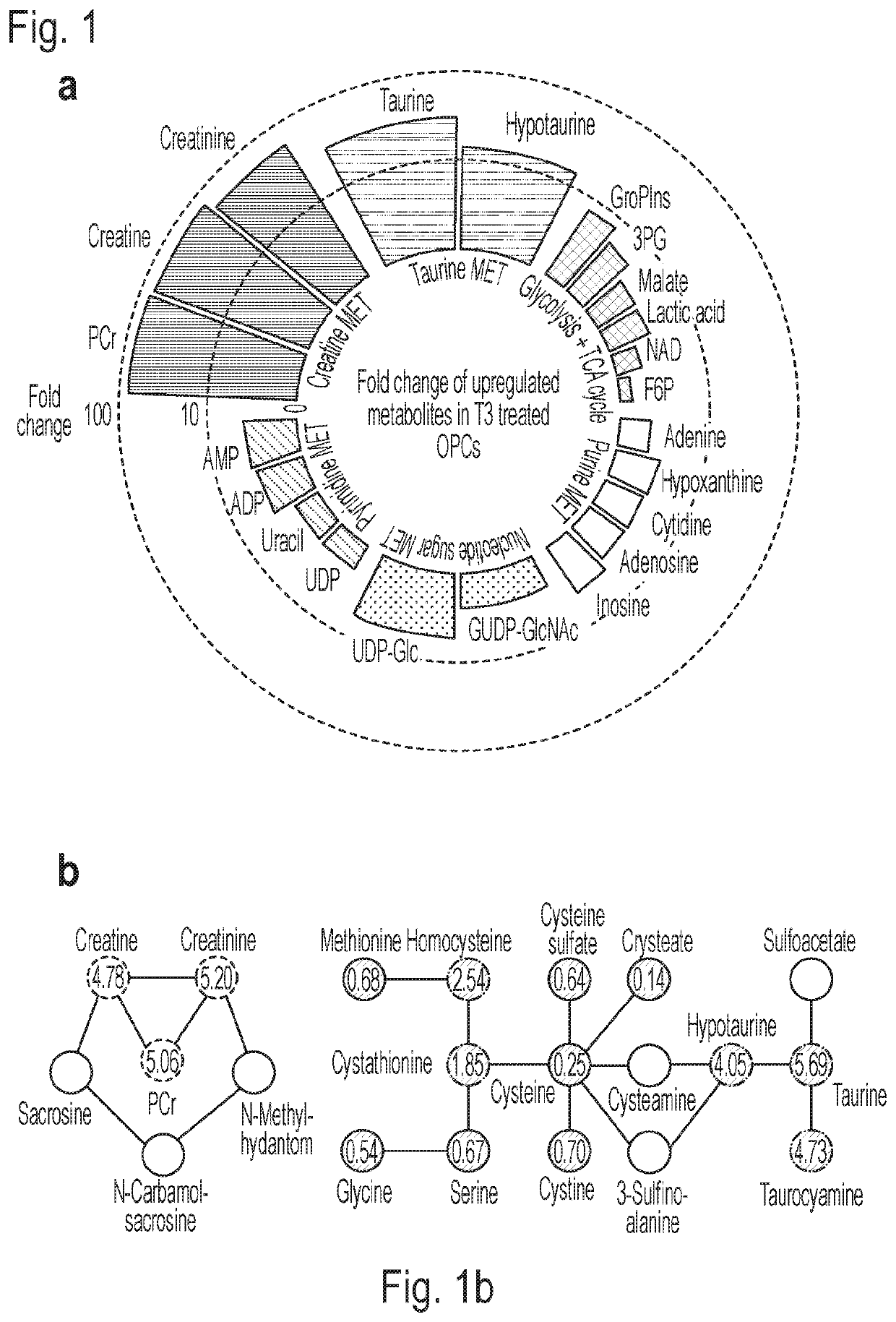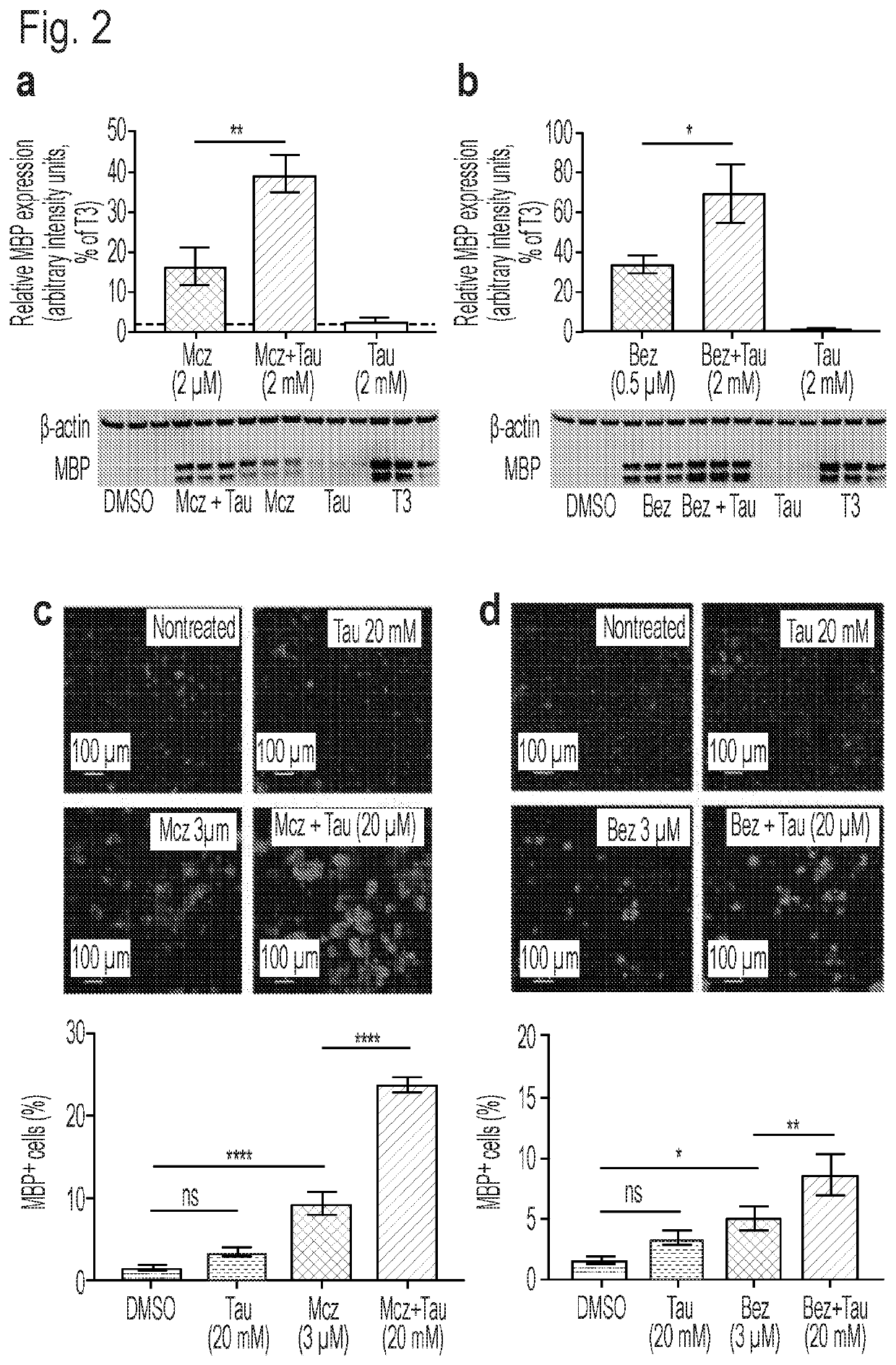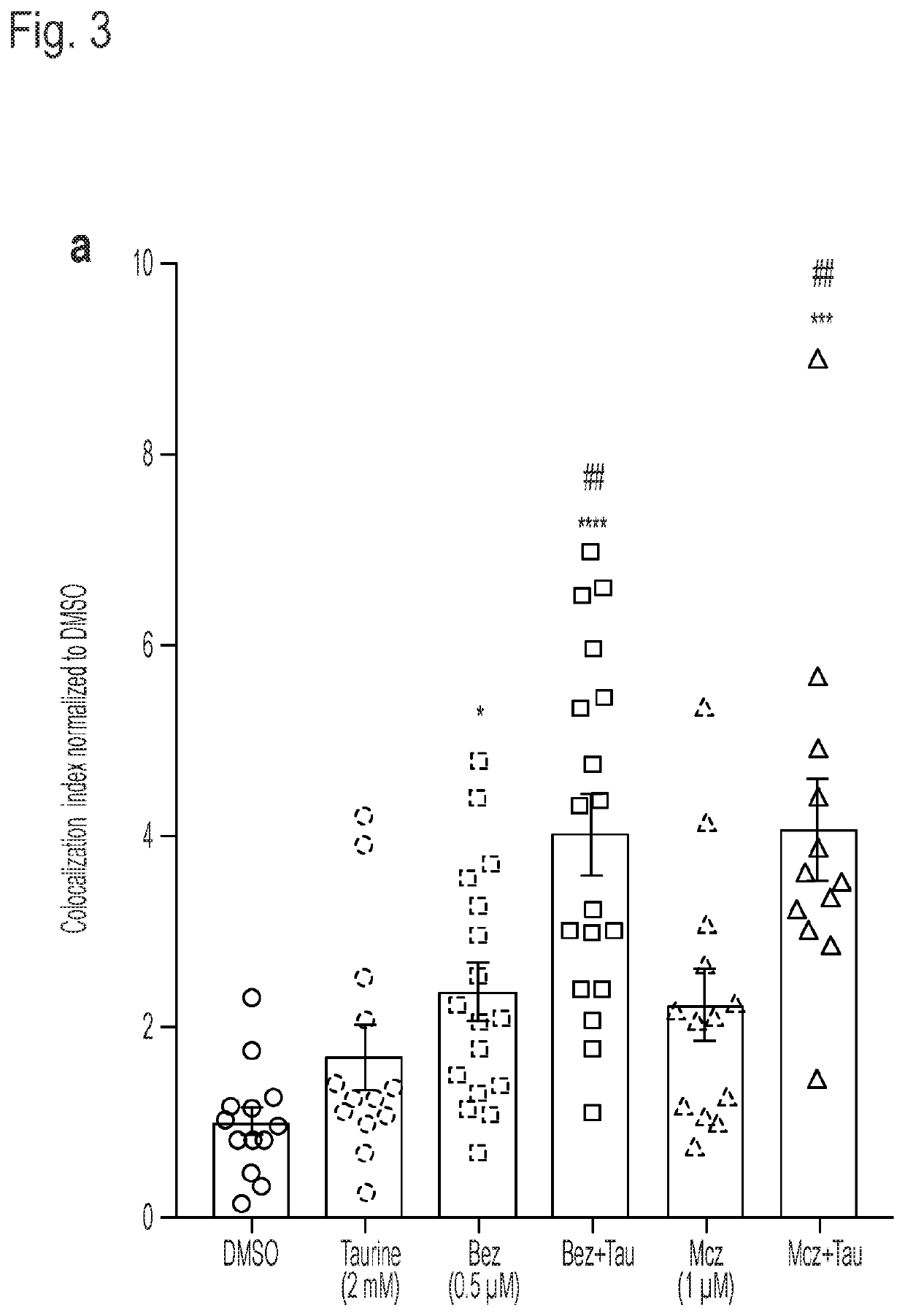Methods for promoting myelination and for treating demyelinating diseases
a technology of demyelinating and myelin, which is applied in the direction of immunoglobulins, peptides, drug compositions, etc., can solve the problems of demyelinating symptoms, and achieve the effects of inhibiting oligodendrocyte differentiation, inhibiting conversion, and enhancing the process of drug-induced differentiation
- Summary
- Abstract
- Description
- Claims
- Application Information
AI Technical Summary
Benefits of technology
Problems solved by technology
Method used
Image
Examples
example 1
mparative Metabolomic Analysis
[0068]Using mass spectrometry-based untargeted metabolomics and lipidomics with hydrophilic interaction chromatography (HILIC) and reversed phase liquid chromatography (RP) respectively combined with electrospray ionization quadruple time-of-flight mass spectrometry (LC-ESI-QTOF-MS), we characterized differentially regulated metabolites from OPCs and mature oligodendrocyte (OL) cells (FIG. 6). Using established conditions for the in vitro differentiation of purified primary OPC cultures generated by immunopanning of rat optic nerves (Deshmukh et al., Nature 502, 327-332, 2013), cells were differentiated over the course of 6 days to a mature myelin basic protein positive (MBP+) fate using triiodothyronine (T3), a known inducer of OPC differentiation (Fernandez et al., Proc Natl Acad Sci. US 101, 16363-16368, 2004). Metabolomics analysis was performed on normalized lysates derived from OPCs cultured for 6 days in basal media (2 ng / mL PDGFαα) containing T3...
example 2
Metabolomic Pathway Analysis
[0070]Intriguingly, taurine and creatine pathways were found to be the most highly altered events associated with OPC differentiation. Taurine and hypotaurine increased by over 20- and 10-fold, respectively, and metabolites in the creatine pathway were also upregulated by at least an order of magnitude (FIG. 1a). A targeted analysis of ˜20 metabolites upstream and downstream of the taurine and creatine pathways was performed using triple-quadrupole MS (QQQ-MS) in multiple reaction monitoring (MRM) mode to increase the sensitivity and examine additional metabolites associated with these pathways (FIG. 1b). Metabolites from both pathways were found to be upregulated in differentiated OLs, consistent with global metabolomic analyses. Specifically, creatine, creatinine and phosphocreatine, as well as taurine, hypotaurine and taurocyamine were all found to be 4-5-fold upregulated in differentiated OLs (FIG. 1b), based on targeted quantitative analysis. The ups...
example 3
Exogenously Supplemented Metabolites
[0071]To examine their physiological function and determine their potential impact on the OPC differentiation process, several of the most altered metabolites associated with OPC differentiation, including taurine, hypotaurine, creatine, and phosphocreatine (PCr), were supplemented to basal and drug-induced differentiation conditions at three physiologically relevant concentrations (0.2, 2, and 20 mM). Compounds were added alone or as mixtures in the presence or absence of optimal or suboptimal concentrations of the known OPC differentiation-inducing drugs benztropine or miconazole. Importantly, while both of these drugs have been demonstrated to induce OPC differentiation in vitro and in vivo, the observed maximal in vitro efficacy of both drugs is suboptimal when compared to that observed for T3. When evaluated in the absence of benztropine or miconazole, no significant effect was observed for any combination or single metabolite. However, when ...
PUM
| Property | Measurement | Unit |
|---|---|---|
| concentration | aaaaa | aaaaa |
| concentration | aaaaa | aaaaa |
| concentration | aaaaa | aaaaa |
Abstract
Description
Claims
Application Information
 Login to View More
Login to View More - R&D
- Intellectual Property
- Life Sciences
- Materials
- Tech Scout
- Unparalleled Data Quality
- Higher Quality Content
- 60% Fewer Hallucinations
Browse by: Latest US Patents, China's latest patents, Technical Efficacy Thesaurus, Application Domain, Technology Topic, Popular Technical Reports.
© 2025 PatSnap. All rights reserved.Legal|Privacy policy|Modern Slavery Act Transparency Statement|Sitemap|About US| Contact US: help@patsnap.com



